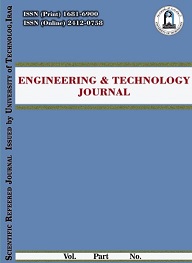Abstract
Interest in using recycled concrete aggregate (RCA) as a partial or full replacement for natural coarse aggregate (NCA) in concrete production has increased significantly in recent years. This shift contributes to reducing landfill usage and conserving natural resources. This study presents an experimental investigation into the behavior of sixteen rectangular beams cast with varying RCA ratios to examine the effects on ultimate load capacity and concrete strain. The beams, each measuring 1600 mm in length, 170 mm in width, and 260 mm in height, were reinforced with two longitudinal 12 mm steel bars, and 8 mm stirrups spaced at 75 mm intervals. The beams were categorized into four groups, with each group consisting of four beams containing RCA at replacement levels of 0%, 25%, 50%, and 75%, respectively. Group one beams were cast without rebar splice lengths, while the remaining three groups incorporated splice lengths of 10, 20, and 30 times the bar diameter (db), respectively. The experimental results indicate that RCA has a marginal impact on the ultimate load capacity. Specifically, for beams with a splice length of 10 db, RCA replacement at 25%, 50%, and 75% led to ultimate load reductions of 3.19%, 6.53%, and 11.7%, respectively. For beams with a 20 db splice length, the reductions were slightly lower at 2.78%, 5.05%, and 9.99%, respectively. In contrast, for beams with a 30 db splice length, the reductions were almost identical to those observed in beams without any splice length, measuring at approximately 1.59%, 2.82%, and 6.64%, respectively
